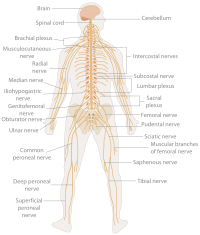
Photo from wikipedia
Animal mating systems are often studied with the goal of understanding why species, populations, or groups vary from one another in the system they display. Although these differences are often… Click to show full abstract
Animal mating systems are often studied with the goal of understanding why species, populations, or groups vary from one another in the system they display. Although these differences are often treated as basically stable, it is also known that mating systems may shift over time (e.g., from one breeding season to the next). There has been some study of how ecological factors correlate with these changes; however, few, if any, studies have investigated how the phenotypic composition of a group governs the timing and probability of these mating system transitions. Groups of stream water striders (Aquarius remigis) can experience rapid changes in mating system dynamics, with small groups often transitioning into a system in which a single, large male monopolizes mating opportunities. We asked if variation in individual- and group-level traits associated with morphology and behavior (e.g., size of the largest individual, average activity behavioral type in the group) could partially explain the variability in how rapidly groups make this transition, if they make it at all. We show that groups with males that exhibit higher social plasticity tended to take longer to transition to a mating system dominated by a single male. Our results, therefore, suggest that groups in identical ecological conditions can diverge in their mating systems based on how much individuals in the group change their behavior in response to the behavior of other members of the group.
Journal Title: Behavioral Ecology
Year Published: 2019
Link to full text (if available)
Share on Social Media: Sign Up to like & get
recommendations!